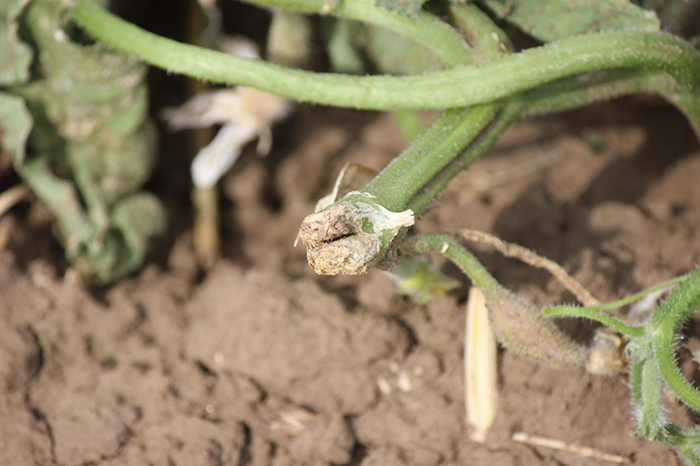
Cutworms
Damaging
You've lovingly pampered your vegetable seedlings for weeks looking forward to a tasty harvest later in summer. Then one morning you find the stems of your plants cut off at the soil line with no suspects in sight. This was caused by cutworms, the nocturnal vandals of the insect world. Cutworms also feed on foliage, buds and shoots of vegetables, fruits (strawberries) and lawns.
There are many different species of cutworms. Adults are moths with dark gray forewings, often variously marked with darker or lighter spots and narrow bands, and lighter coloured hind wings. The moths lay many hundreds of eggs on plants, in grassy sod or weedy fields. The larvae are legless, 5 cm long when fully grown, and can be brown or grey to green in
Cutworms have many natural predators such as birds as well as beneficial insects such as ground beetles, parasitoid wasps and flies, ants, rove beetles and stiletto fly larvae. Do not use insecticides to kill cutworms as this will also kill beneficial insects.
Cutworms are common in newly cultivated gardens that were formerly lawn or pasture. Grasses are a preferred feeding source of some species.
Symptoms:
- Typical damage to vegetables is stems cut close to the ground. Cutworms especially like young seedlings. When the cut is not complete, plants may appear wilted. Since cutworms only emerge from the soil at night to feed, the damage is often discovered in the morning.
- Strawberry cutworms cut the stems of leaves and flowers and later bore into the crown which kills the plant.
- In lawns, sunken pockets may appear where glassy cutworms have been active. This happens more often in areas where grass blades have been cut too close to the surface.
Control:
- Cutworm larvae feed at night and hide in the soil under plants during the day. Use a flashlight to find them on plants at night. In the daytime, lightly rake the top inch or two of soil around plants to find them. Handpick and destroy.
- Make barrier collars out of aluminum foil, cardboard (such as toilet paper rolls), milk cartons, tin cans or plastic containers to place around the stems of plants. Remove both ends of the container and insert the collars 5 cm (2”) into the soil.
- Remove and dispose of plant debris after harvest as moths lay their eggs on plant litter in late summer.
- It helps to shallow till (to a maximum depth of 8 cm or 3”) before planting in early spring to kill eggs and larvae. Shallow tilling can be done in fall after harvest in colder weather to expose the eggs and larvae to cold temperatures and to predators like birds. Tilling is very hard on soil, so only do this if the infestation is severe.
- For severe infestations, BtK (Bacillus thuringiensis kurstaki) is a bacteria that can be a applied to stems and leaves. When the larvae consume BtK, the bacteria paralyses its gut and kills it.
- Diatomaceous earth may also help with control when sprinkled on the soil.
Sources and further reading:

